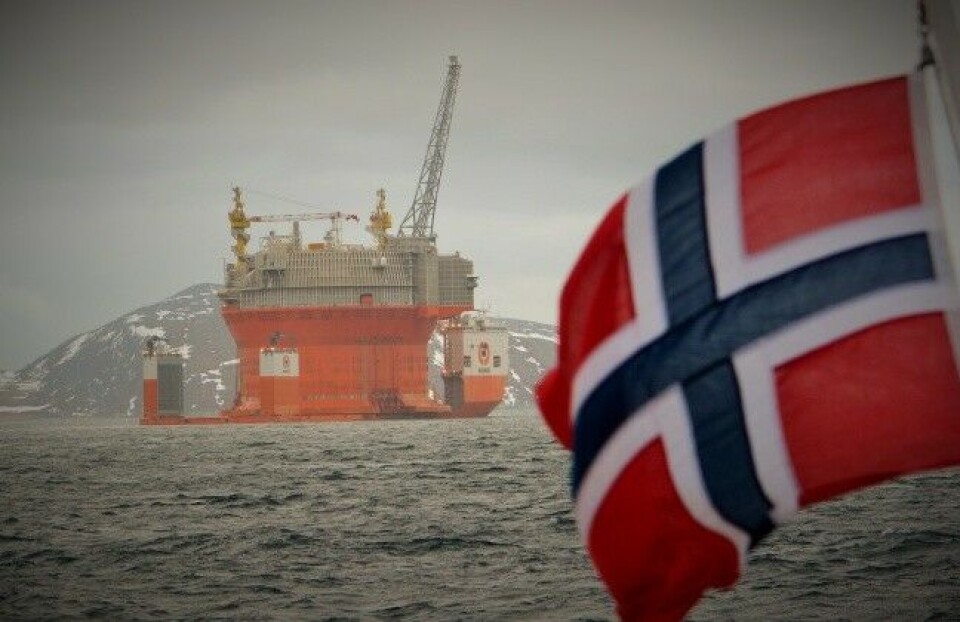
Plenty of more oil in Barents Sea, says petroleum authority
New field discoveries have been scarce, but the Norwegian Petroleum Directorate still believes that there is more than 3 billion standard cubic meters of oil equivalents hiding under the far northern sea bed.
Companies have drilled a big number of wells, but few new resources have been found. The Barents Sea was long seen as Norway’s new and upcoming petroleum province. But oilmen have experienced mostly downturn and disappointment.
In late 2019, national oil company Equinor announced that it was pulling out of the southeastern part of the Barents Sea, the area that just few years ago was seen as site for potential oil and natural gas «elephants».
«The wells that we have operated have shown disappointing results and Equinor will from now on focus its activity in more western areas,» company representative Dan Tuppen told Norwegian media.
There are today only two fields in production in the Barents Sea; the Snøhvit natural gas field operated by Equinor and Vår Energi’s (former ENI) Goliat field. In addition comes the Johan Castberg, a field currently under development by Equinor and partners and due to come into production in 2022.
Belief in Barents oil
However, the Petroleum Directorate is confident that the area remains highly prospective and that there are plenty of more discoveries to be made. The Directorate’s new resource accounts report says that the Barents Sea holds as much as 3,079 billion standard cubic meters of oil equivalents, of which only 87 million cubic meters has been produced.
And most of the resources are located in the southern, south-eastern and north-eastern parts of the area, the report reads. That includes the areas that are now being abandoned by Equinor. It also includes waters adjacent to Norway’s maritime border to Russia.
Scarcely explored area
Since Norway found its first oil in the late 1960s, it has a been the North Sea that has been locomotive in national petroleum production. That will remain the case for many more years. According to the Petroleum Directorate, up to 44 percent of the country’s remaining oil and gas resources are located in that area. The opening of the Johan Sverdrup field in late 2019 has additionally strengthened oilmen’s belief in the North Sea.
After the North Sea, it is the Barents Sea that is seen as most prospective. Of Norway’s remaining oil and gas resources, a total of 37 percent is located in the far northern waters. About 17 percent are believed to be located in the Norwegian Sea.
By late 2019, Norway had produced, sold and delivered 48 percent of is total petroleum resources, the resource report reads. Remaining reserves amount to 2,9 billion standard cubic meters, while undiscovered resources are estimated to 3,91 billion cubic meters.
More Norwegian oil
Despite the increasingly serious troubles with global climate change and international demands for curbed oil and gas production, Norway intends to uphold a high level of petroleum production for many more years. According to Ingrid Sølvberg, Leader of the Petroleum Directorate, there is positive dynamics in the Norwegian oil sector and big opportunities for the oil drillers.
In 2019, as many as 57 exploration wells were drilled, many of them in previously unexplored areas, and a record-beating 83 new production licenses were issued.
«There are great opportunities for much more all across the shelf, she underlined in her recent presentation of the 2019 shelf report and argued that «many areas must now be more explored.»
Norway now has a total of 87 fields in production, the highest number ever, and output is bouncing back after several years of downturn. A new Norwegian peak oil is now expected in 2024 with a production of more than 117,5 million barrels, a 40 percent increase from 2019. Natural gas production is due to be in the stable on the same high level as today.
















